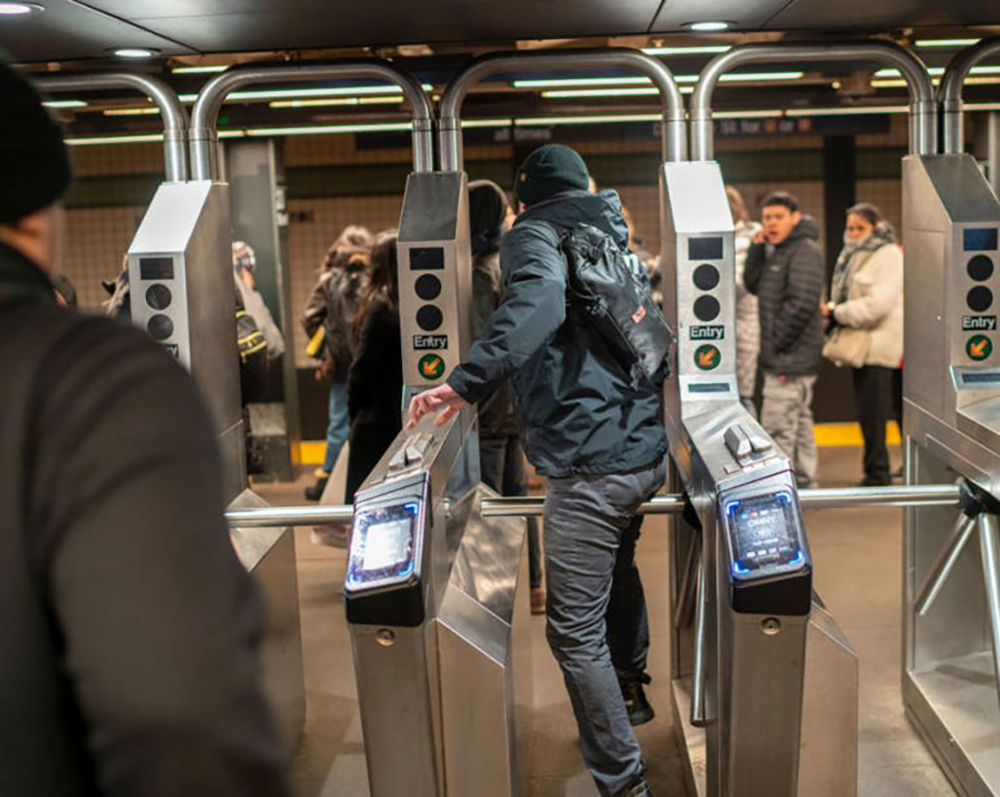|
Getting your Trinity Audio player ready...
|
By: Benyamin Davidsons
It’s gotten a lot more difficult to hitch a free ride on MTA buses.
New York City bus stops and buses now have unarmed “enforcers” to thwart fare beating. The enforcement has been successful and is quickly reaping dividends. As reported by the NY Post, the MTA’s fare inspectors, known as EAGLE teams, operate both in uniforms and in plain clothes, and are tasked throughout the five boroughs to pull any passenger who hasn’t paid off the buses. “They are serious,” bus rider Imogine Grant told The Post while waited for the Q65 bus in Jamaica last week. “They are not going to let you on if you don’t pay.”
The EAGLE teams were first launched at several problematic stops in Queens and Brooklyn. Fines for fare evasion range from $50 to $100, but in most cases the offenders just get kicked off the bus. “We pull up to eight to 10 people off the buses,” one plainclothes inspector said. The enforcement also keeps people from using transfers inappropriately. In some cases, just seeing the inspectors’ uniforms is enough to stop potential freeloaders, but still others try to push their luck, another MTA worker said.
“[One rider] came on the bus and he didn’t pay,” they said. “We told him he had to pay. He said, ‘I am not paying, get the f–k out of here.’ I asked him, ‘How old are you?’ He said, ‘Old enough.’ “We told him to get off the bus,” the inspector said. “I asked him his age because if he was over 65 you can use your discretion. If we see someone wearing a uniform like they are going to work, we can use our discretion and let them on.”
Per the Post, on Aug. 3, the MTA had announced the enforcement program, following years of losses from fare evasion. It was estimated that in 2022 alone, the transit agency lost about $312 million due to bus fare evasions. The MTA has said that fare evasion grew from 21% in 2020 to almost 50% in the first quarter of 2024. Fare beaters are “depriving the MTA of much needed revenue and that eventually could come out of service and nobody wants to see that,” said Andrew Albert, an MTA board member and the chairman of the rider advocacy group, the New York City Transit Riders Council.
An MTA spokesperson told The Post that new statistics are not yet available. However, NYC Transit Interim President Demetrius Crichlow said at a Sept. 23 board meeting, that in the first two weeks of enforcement there were 3,200 more paid bus rides per day.
“Our fare inspections are now touching the trips of tens of thousands of riders every day and we’re beginning to see a real impact in what we’re doing,” Crichlow told the MTA board.
The efforts are also considered to be an effort to lower crime in buses, as the trouble makers are also often fare beaters. “There’s no question customers are responding,” he said. “They are directing applause. You see people driving by saying, ‘It’s about time. Thank you guys for everything you’re doing.” He added, “It speaks to the individuals who continued to pay and have been kind of dismayed by the fact that no one else, or many individuals, are not doing so.”





